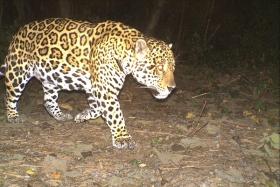Seahorses get safety from boats
Posted on
|
Boat owners are going to have anchoring restrictions to protect rare seahorses and marine life.
There are plans for 41 new marine conservation zones around the coast. One of those that will receive protection is Studland Bay in Dorset. It will be protected from yachts and motorboats that moor there. In Kent, Goodwin Sands (a 10 mile sandbank) will receive similar protection. The Camel Estuary (Cornwall) and the Orford Inshore (off Suffolk) will be protected too. In 2008, the Seahorse Trust found 40 seahorses in Studland Bay. In 2018, (last month in fact), the Seahorse Trust found 0 seahorses in Studland Bay. That’s zero. Heavy anchors and their metal chains destroy seagrass, the normal habitat for seahorses. And the Seahorse Trust says that seahorses should recolonise the area after the seagrass had recovered. The charity says that while serious yachts people don’t anchor on the sea grass, plenty of boat users do. Boating enthusiasts protested but the government fortunately over-ruled them. Needless to say, the Royal Yachting Association has said it will impose restrictions, believing that seahorses and recreational boating activities can "reasonably co-exist". "Reasonably exist" isn’t good enough. If, over 10 years, the number of seahorses in Studland Bay has plummeted from a find of 40 to 0, there must be a very good reason. It’s high time government stepped in, did the right thing and protected wildlife habitat. A good move by the British Government. Now, more protection for wildlife, please! Give wildlife the space and right habitat to thrive, they will.
Visit the Seahorse Trust and find out how you can help here |
Seahorses get safety from boats
Boat owners are going to have anchoring restrictions to protect rare seahorses and marine life.
There are plans for 41 new marine conservation zones around the coast. One of those that will receive protection is Studland Bay in Dorset. It will be protected from yachts and motorboats that moor there. In Kent, Goodwin Sands (a 10 mile sandbank) will receive similar protection. The Camel Estuary (Cornwall) and the Orford Inshore (off Suffolk) will be protected too.
In 2008, the Seahorse Trust found 40 seahorses in Sutland Bay.
In 2018, (last month in fact), the Seahorse Trust found 0 seahorses in Studland Bay. That’s zero.
Heavy anchors and their metal chains destroy seagrass, the normal habitat for seahorses. And the Seahorse Trust says that seahorses should recolonise the area after the seagrass had recovered.
The charity says that while serious yachts people don’t anchor on the sea grass, plenty of boat users do.
Boating enthusiasts protested but the government came to their senses and took no notice of them
Needless to say, the Royal Yachting Association has said it will impose restrictions, believing that seahorses and recreational boating activities can "reasonably co-exist".
"Reasonably exist" isn’t good enough. This is yet another example of wildlife suffering from the human race and our activities.
It isn’t as if leisure boating was an essential activity. (I should know, because we are boat owners.) Surviving is.
If, over 10 years, the number of seahorses in Studland Bay has plummeted from a find of 40 to 0, there must be a very good reason.
And with so many people just not caring at all about nature (and it’s not just boat owners, of course) or even thinking about what they are doing and the impact they are having, it’s high time government stepped in, did the right thing and protected wildlife habitat.
A good move by the British Government. Now, more protection, please!
Give wildlife the space and right habitat to thrive, they will.
